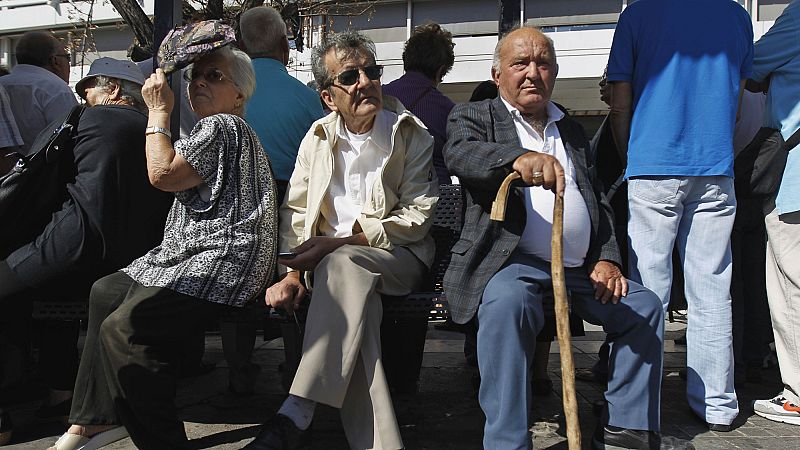
Older people had lower average disposable incomes than the total population in 28 European countries in 2022, according to the OECD. Luxembourg was the only exception among the 29 countries included in the analysis.
Pensioners face financial difficulties in many countries and some people aged 65 and over continue to work as a result. But how exactly do the income sources of older people vary across nations?
According to OECD data, two-thirds (66%) of the income of people aged 65 and over in Europe comes from public payouts, which are mainly state pensions and benefits. That's on average across 27 countries in 2020 or the latest available year.
Work is the largest income source after public transfers, accounting for 21% of disposable income for older citizens. Capital income, such as personal pensions and savings, follows at 7%, and private occupational pensions at 6%.
The share of public payouts in incomes ranges from 41% in Switzerland to 86% in Belgium.
Public transfers also account for at least three-quarters of income for older people in Luxembourg (83%), Austria (82%), Finland (80%), Czechia (76%), Italy (76%), and Portugal and Greece (both 75%).
Besides Switzerland, this share is below 50% in the UK (42%), the Netherlands (43%), and Denmark (45%).
Among Europe’s five largest economies, France has the highest share of public transfers in older people’s incomes at 78%, while the UK has the lowest at 42%. The share is 76% in Italy, 72% in Spain, and 68% in Germany.
With the exception of Finland, the Nordic countries have lower shares of public transfers. The share is 52% in Sweden, and 58% in both Norway and Iceland.
In Turkey, an EU candidate country, 57% of older people’s income comes from public transfers.
Private occupational transfers exist only in 7 countries
Private occupational pensions (pensions, severance payments, death grants, etc.) are not common across Europe.
Among 27 countries, only seven note them as a source of income for older people. The Netherlands has the highest share, where they account for 40% of income, followed by the UK at 33% and Switzerland at 29%.
Three Nordic countries also include private occupational pensions. They make up 19% of income in Sweden, 15% in Denmark, and 14% in Norway.
Germany is the last country in this group, with private occupational pensions accounting for just 5% of income.
How does the share of capitals vary?
The portion of income that comes from capital — mainly private pensions and personal savings — varies significantly across Europe, ranging from less than 1% in Slovakia to as much as 23% in Denmark. In several countries, this share is at least 10%. These include Turkey and Switzerland (both 16%), France (15%), Sweden (12%), the UK (11%), and Finland, Norway, and Iceland (each at 10%).
The share of capital in older people’s income is less than 5% in several countries.
Work remains a key income source for older people
The share of work in the income of older people is significant in many European countries, exceeding one-third in several. It ranges from 7% in France to 40% in Latvia.
Work accounts for over 32% of income for older people in Slovakia (36%), Lithuania (35%), Estonia and Poland (both 34%), and Iceland (32%).
Work still makes up at least one-fifth of older people's income in several countries, including Turkey (27%), Hungary (26%), Slovenia (23%), Ireland and Czechia (22% each), and Greece, Portugal (21% each), and Spain (20%).
Older people in France, Luxembourg, Finland, and Belgium are among the least reliant on work, with employment income accounting for less than 11% of their total income.
Key findings: Varied social security systems
Varying levels of the four income sources for older people, most of whom are pensioners, show the diversity of social security systems across Europe. Key insights from the data include:
- Western Europe (such as Belgium, France, Austria) relies heavily on public pensions as the primary income source.
- Nordic countries (such as Denmark and Sweden, not Finland) have more diversified income sources, including strong private pension schemes.
- Eastern and Southern Europe (including Poland, Slovakia, Greece, and Turkey) tend to have higher shares of work-related income.
- Private occupational pensions remain underdeveloped in many Eastern and Southern European countries.
Old age poverty remains a significant issue in several European countries, and major pension disparities continue to exist across the continent. As life expectancies increase, policymakers face growing challenges to ensure adequate support for ageing populations while keeping deficits at economically sustainable levels.







